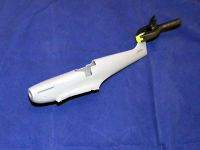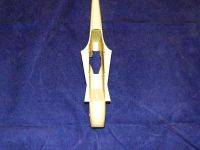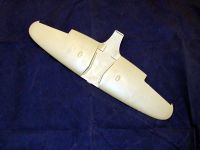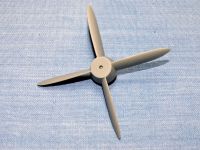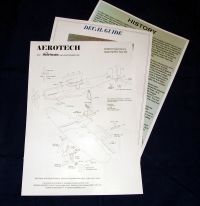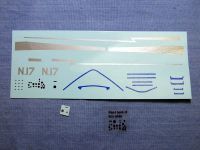Aerotech | AT32018: 1/32 Speed Spitfire Type 323
Reviewed by Kevin Futter
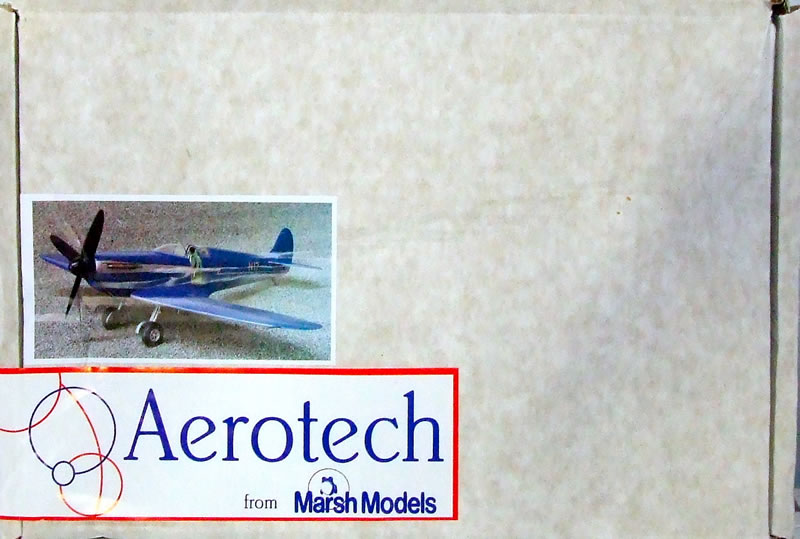
Aerotech is the aircraft model brand of Marsh Models out of the UK. Their specialty is 1/32 classic racing aircraft in resin, and the Speed Spitfire is their latest kit.
The Speed Spitfire
The Speed Spitfire was modified from one of the first batch of Mk 1 Spitfires off the production line (K9834) in 1937, with the intention of taking the world land plane speed record. The wing tips were rounded, most of the access panels deleted, and the exterior surfaces flush-rivetted and smoothed over. Fitted with a "Merlin II" engine and a four-bladed wooden propeller, the aircraft attained a speed of 407 mph (656 km/h) in February 1939, but a series of successful runs by the Germans, culminating in the Me 209 reaching 469 mph (755 km/h) on 26 April, forced the project to be abandoned as uncompetitive (source: Wikipedia).
The Kit
Aerotech's Speed Spitfire is a resin kit with white metal and photo-etched detail parts. The canopy is vacuform, and a small decal sheet is provided. The kit ships in a sturdy shipping box, with all parts and bags individually protected by bubble wrap, and empty spaces packed out with foam peanuts.
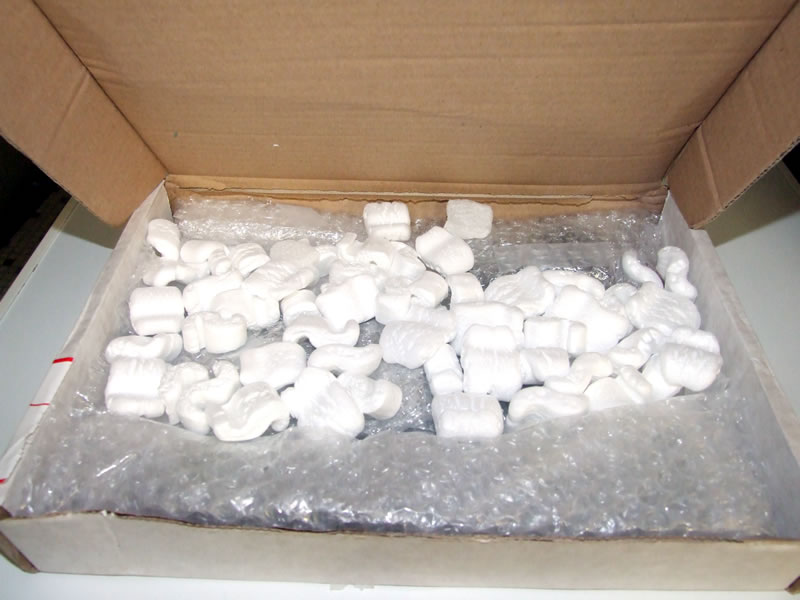
Inside the box you'll find the following parts:
- One-piece resin fuselage;
- One-piece resin wing;
- One-piece resin propeller;
- One clear vacuform sheet of canopy parts;
- One resealable bag of resin detail parts;
- One resealable bag of white metal detail parts and a set of rubber tyres;
- One resealable bag containing three photo-etched frets;
- One plastic bag containing the main decal sheet, a small instruments sheet and a sheet of acetate instruments;
- Three A4 sheets for the assembly guide, decal guide and history.
Main Parts
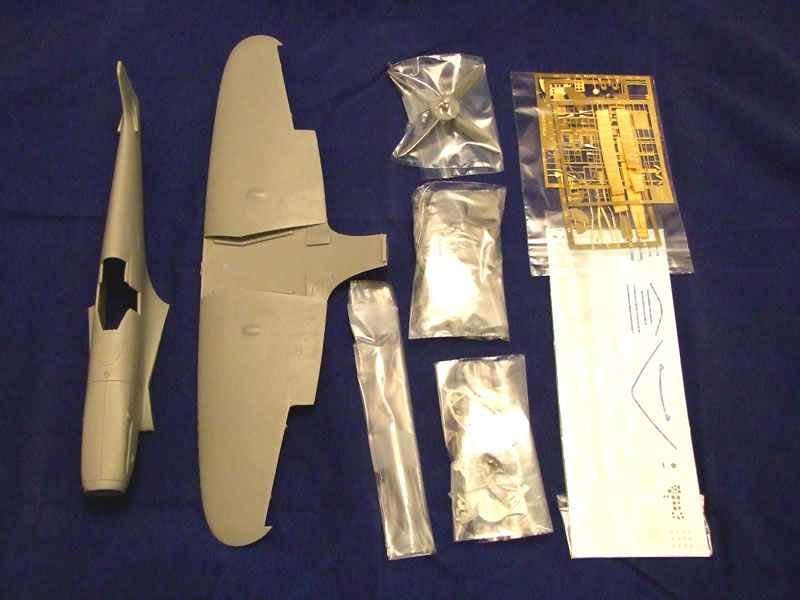
The first thing you notice when examining the kit's parts is that both the wings and fuselage are cast as single pieces.
The second photo above shows that the forward and aft sections of the fuselage are in fact solid resin, and when combined with the essentially solid wings, will make for quite a weighty assembly. I have some concerns about whether the provided white metal landing gear legs with hold up to the strain. The landing gear doors are also provided in white metal, so my hope is that a strong bond between them will result in a structure stiff enough to handle the weight without bending. Only time will tell!
The cockpit sidewalls inside the fuselage feature a number of slots and grooves, into which fit the various cockpit parts. Most of this looks to be reasonably straightforward, except possibly for the photo-etched framing detail, which might be awkward to fit neatly and accurately into the already-closed-up fuselage. The parts look well-designed, and the assembly instructions are clear, which will help enormously.
It's worth noting that the surface detail, limited mainly to around the nose section, is very heavy indeed:
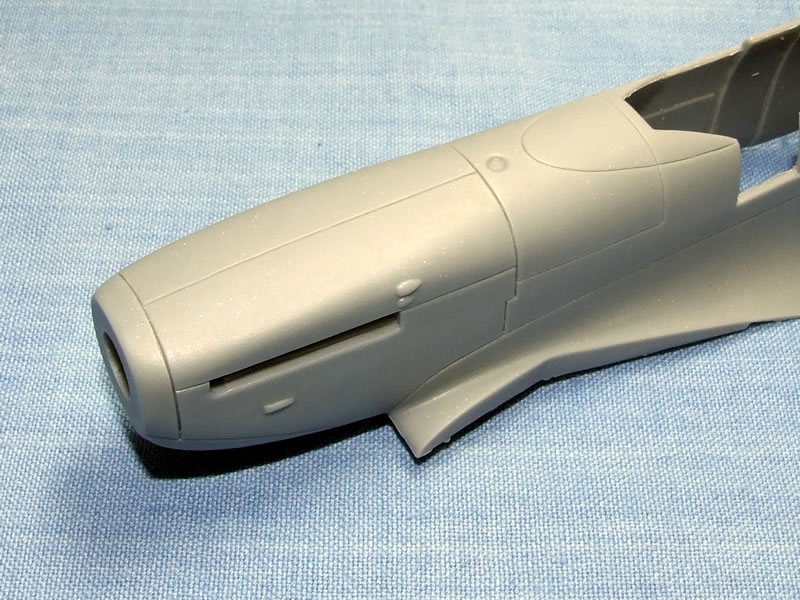
The level and nature of surface detail is a contentious and highly personal issue, so these deep panel lines may or may not bother you. If they do, I'd imagine some Mr Surfacer or other liquid putty brushed into the lines would go a long way toward taming them.
Detail Parts
As mentioned above, the kit's details are shared between resin, white metal and photo-etched parts.
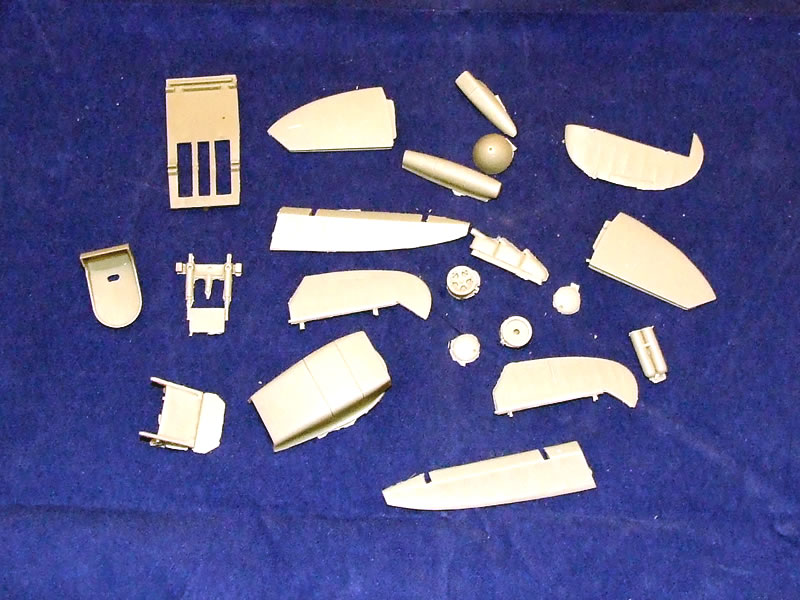
The eagle-eyed among you might notice that there is only one exhaust stack in the photo of the resin parts above. This review sample appears to be missing one. I've contacted Marsh Models and am hoping they can furnish me with the missing piece. But it does underscore an important point when purchasing kits of this nature: always check that all parts are present!
There are no major casting blocks to deal with on any of the parts, though several have prominent pour-channel spigots that will need to be removed, such as those on the rear of the propeller assembly:
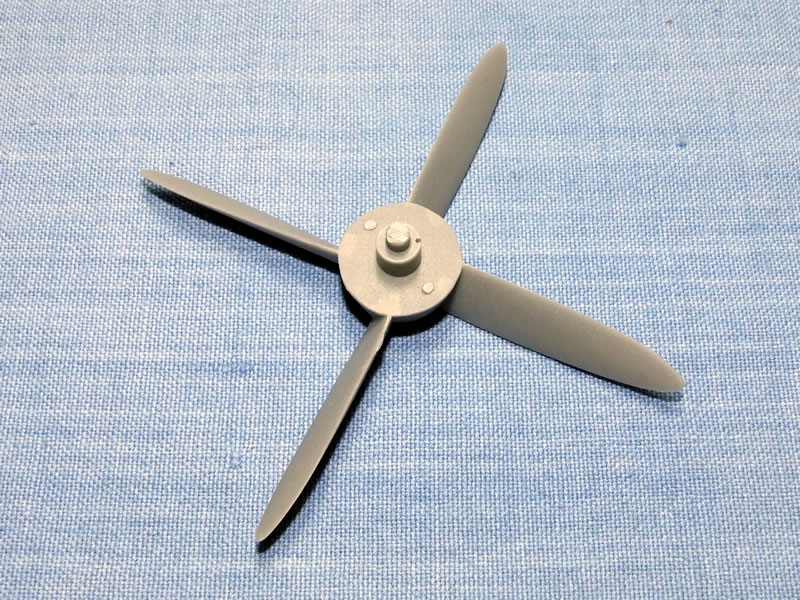
The resin itself is hard, with no visible surface imperfections, pin holes or air bubbles. The finish is on the matte side of satin, with a very subtle surface texture. This should aid paint adhesion nicely, though I recommend a good primer coat beforehand. The parts are all crisply moulded, with just a small amount of resin flash on some of the smaller parts, and certainly nothing that would present a challenge to clean up.
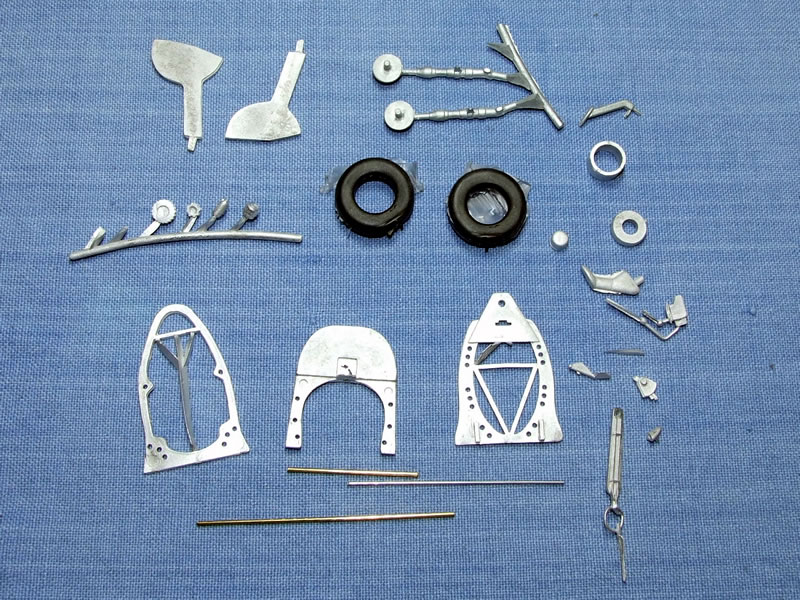
The white metal parts focus on the cockpit and landing gear, and include the cockpit station frames, instrument panel and sundry other cockpit detail parts. The landing gear is composed almost entirely of white metal and photo-etched parts, with the exception of the rubber/vinyl tyres. My hope is that the combination of white metal landing gear struts and landing gear doors will be stiff enough to cope with what will be this model's considerable weight.
The tyres feature plenty of moulding flash, and will certainly be a challenge to clean up. At least there will be no possibility of the rubber or vinyl material compromising the plastic rims, as they are in white metal. It's also possible that one of the many resin wheel sets on the market may be a suitable replacement, should you feel it necessary.
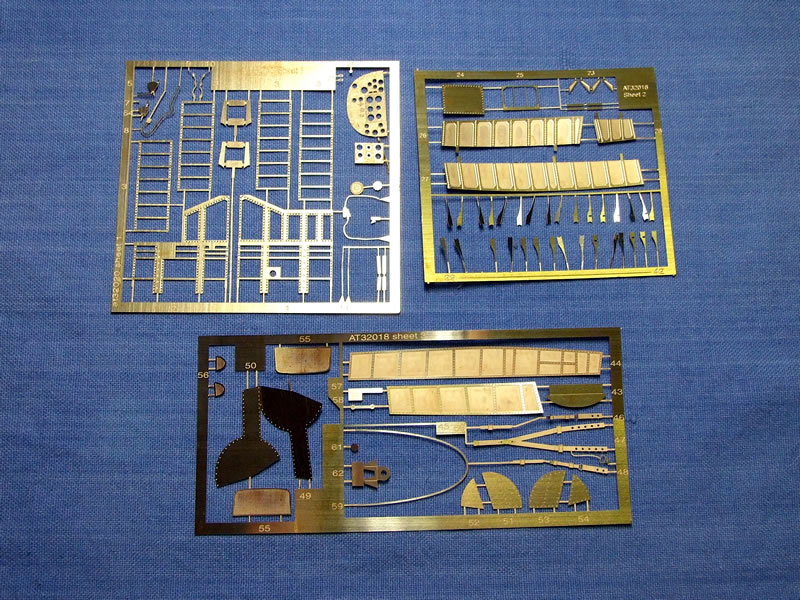
Most of the model's finer detail comes from the three frets of photo-etched parts provided with the kit. Many of the parts are quite delicate, covering cockpit, landing gear, radiator and flap details. I don't get on especially well with PE, so this aspect of the build will be a challenge for me, but the level of detail provided would not likely be matched by resin or white metal, and should give the finished model a finesse it would otherwise lack.
Our last crop of photos feature the prop, canopy, instructions and decals.
The canopy is a vacuform affair in three parts, and shouldn't pose any real problems, though experience always helps. Interestingly, the decal sheet also provides canopy frames as an alternative to masking and painting them. If you choose to use them, the challenge will be in matching the paintwork for the rest of the airframe to the blue used in the decals.
The decals themselves represent the machine in its 1939 guise, and include the racing flashes in silver if you don't feel up to masking and painting them. The main advantage of using the decal flashes is that they exactly match the "N.17" number, and those would be more difficult to mask and paint by hand. I'd love to have seen a set of pre-cut paint masks included with this kit for those features, but that's a personal preference rather than a criticism of the kit itself.
The instructions include colour-callouts where appropriate, and the colours are described generically, except for the interior colour, where Humbrol 78 is quoted. The decal placement guide is printed in colour, and features a pair of photos of the finished model, and a drawing of the underside of the aircraft.
Conclusion
Overall this appears at first glance to be a fine kit of a unique subject. When I first opened the box and saw the one-piece wing and fuselage, I thought this might be a quick and relatively simple model to build. When I opened all the bags of detail parts however, I quickly realised that there was a lot more to this model than I had at first assumed. While it's not a kit I would necessarily recommend to beginners, I think experienced modellers will have little trouble in using it as the basis for a fine replica. This is after all who it has been designed for, and I have no hesitation in recommending it to them. The history notes number this example as #10 of 150, so if you're interested, get in quick, as supplies will obviously be limited.
The real test of a model though is in the building, and I've started a build of this model in the forums as part of the Anything But Injection Moulded Group Build. I hope you can follow along. I'm very much looking forward to building it!
Thanks to Marsh Models for the review sample. The Aerotech Speed Spitfire is available directly from their website.
© Kevin Futter 2013
This product is available from the following LSP sponsors
This review was published on Sunday, June 30 2013; Last modified on Saturday, March 26 2016

